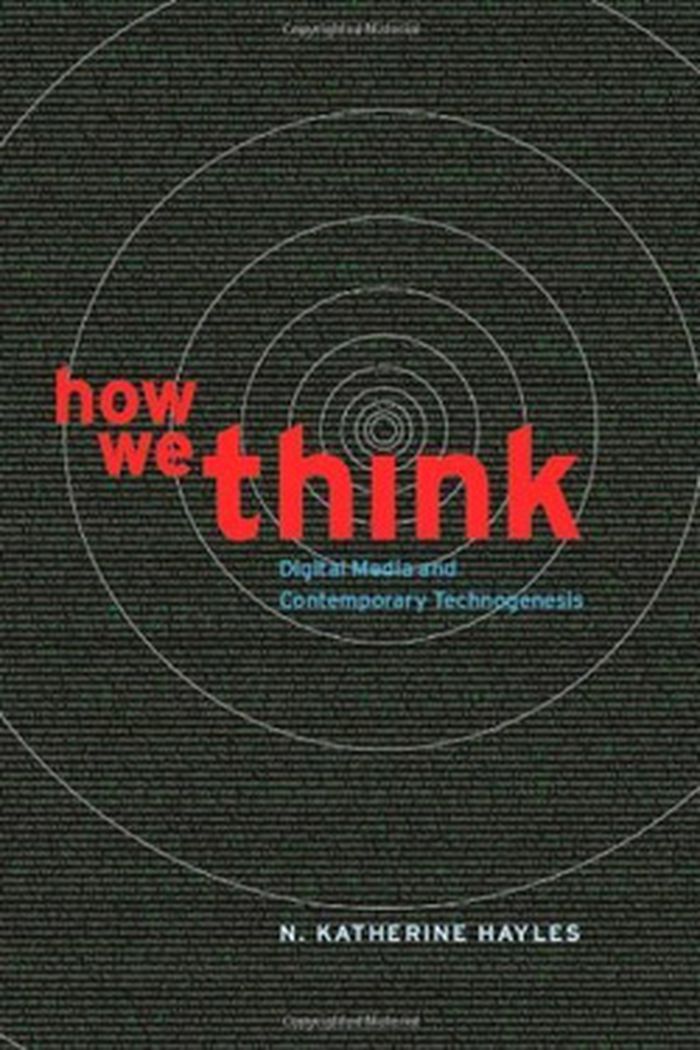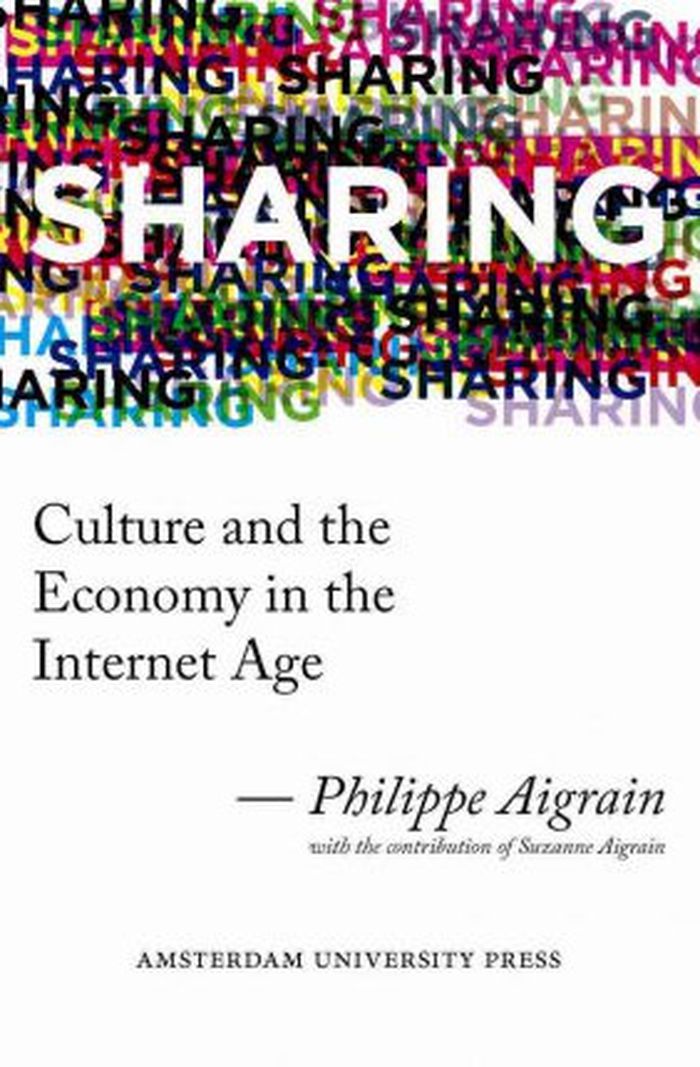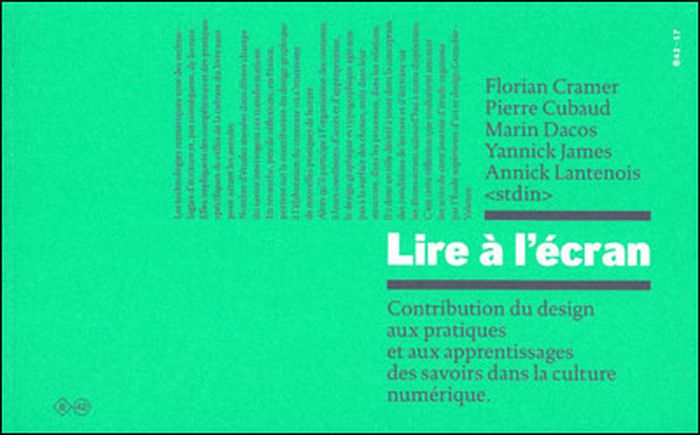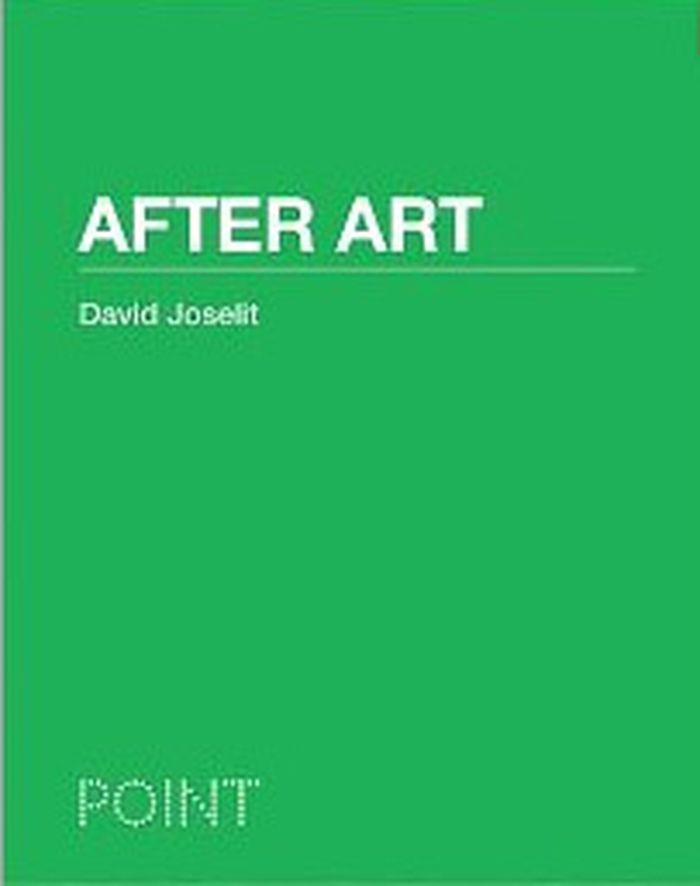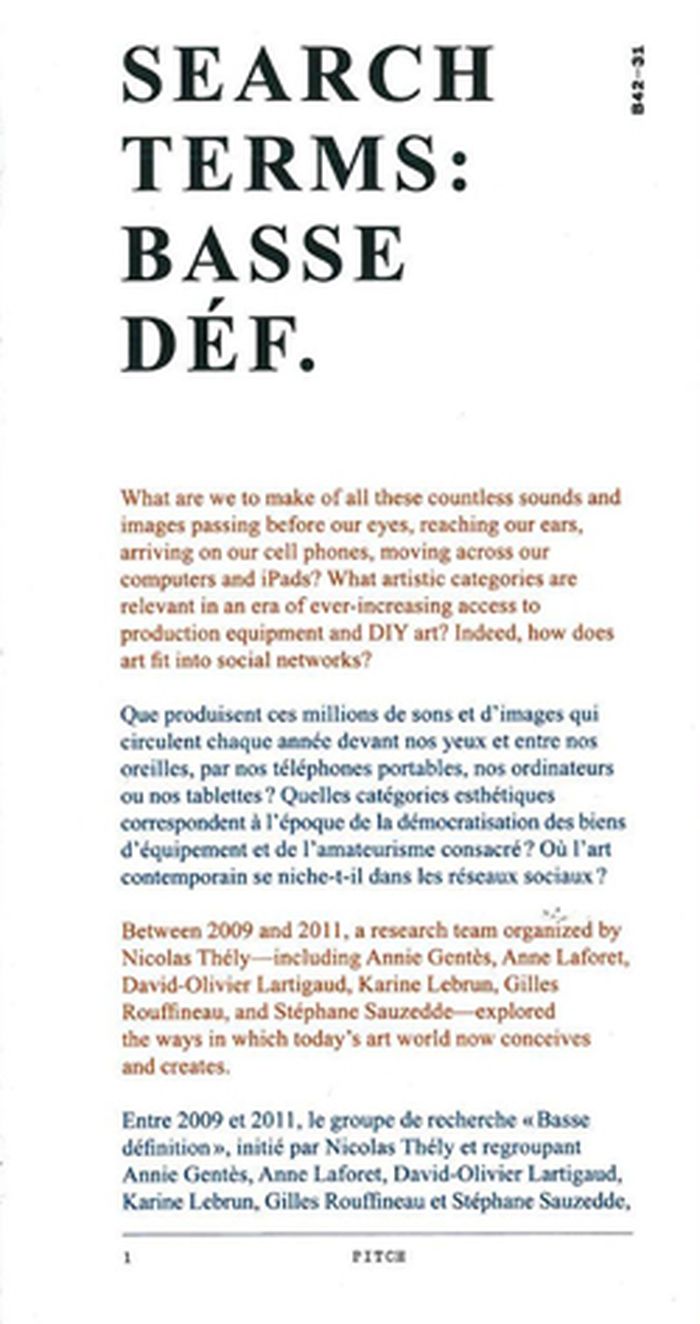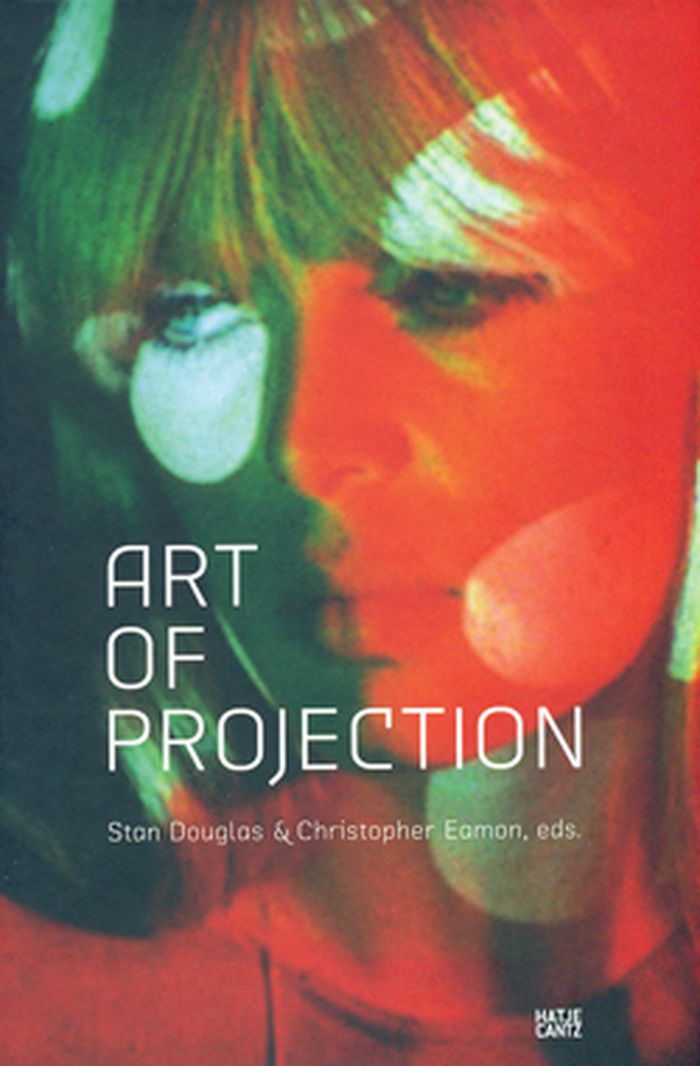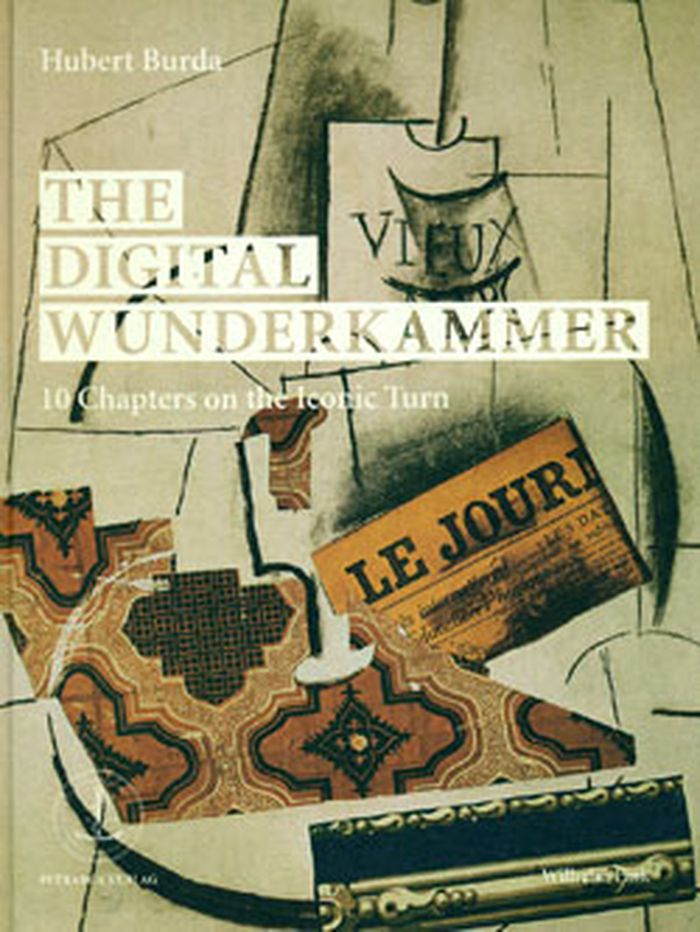$28.95
(disponible sur commande)
Résumé:
How do we think?” N. Katherine Hayles poses this question at the beginning of this bracing exploration of the idea that we think through, with, and alongside media. As the age of print passes and new technologies appear every day, this proposition has become far more complicated, particularly for the traditionally print-based disciplines in the humanities and qualitative(...)
How we think : digital media and contemporary technogenesis
Actions:
Prix:
$28.95
(disponible sur commande)
Résumé:
How do we think?” N. Katherine Hayles poses this question at the beginning of this bracing exploration of the idea that we think through, with, and alongside media. As the age of print passes and new technologies appear every day, this proposition has become far more complicated, particularly for the traditionally print-based disciplines in the humanities and qualitative social sciences. With a rift growing between digital scholarship and its print-based counterpart, Hayles argues for contemporary technogenesis — the belief that humans and technics are coevolving — and advocates for what she calls comparative media studies, a new approach to locating digital work within print traditions and vice versa.
Épistémologie et réseau
$39.95
(disponible sur commande)
Résumé:
In the past fifteen years, file sharing of digital cultural works between individuals has been at the center of a number of debates on the future of culture itself. To some, sharing constitutes piracy, to be fought against and eradicated. Others see it as unavoidable, and table proposals to compensate for its harmful effects. Meanwhile, little progress has been made(...)
Sharing : culture and the economy in the internet age
Actions:
Prix:
$39.95
(disponible sur commande)
Résumé:
In the past fifteen years, file sharing of digital cultural works between individuals has been at the center of a number of debates on the future of culture itself. To some, sharing constitutes piracy, to be fought against and eradicated. Others see it as unavoidable, and table proposals to compensate for its harmful effects. Meanwhile, little progress has been made towards addressing the real challenges facing culture in a digital world. Sharing starts from a radically different viewpoint, namely that the non-market sharing of digital works is both legitimate and useful. Philippe Aigrain looks at the benefits of file sharing, which allows unknown writers and artists to be appreciated more easily. It supports this premise with empirical research, demonstrating that non-market sharing leads to more diversity in the attention given to various works.
Épistémologie et réseau
$24.95
(disponible sur commande)
Résumé:
Les technologies numériques sont des technologies d'écriture et, par conséquent, de lectures. Elles impliquent des compétences et des pratiques spécifiques de celles de la culture du livre sans pour autant les annuler. Alors qu'il participe à l'organisation des contenus, à leurs condition d'accès et d'appropriation, le design graphique et typographique agit non pas à la(...)
Lire à l'écran : contribution du design aux pratiques et aux apprentissages des savoirs dans la culture numérique
Actions:
Prix:
$24.95
(disponible sur commande)
Résumé:
Les technologies numériques sont des technologies d'écriture et, par conséquent, de lectures. Elles impliquent des compétences et des pratiques spécifiques de celles de la culture du livre sans pour autant les annuler. Alors qu'il participe à l'organisation des contenus, à leurs condition d'accès et d'appropriation, le design graphique et typographique agit non pas à la surface des choses, mais dans leur structure, dans le processus, dans les relations. Il y a donc un rôle décisif à jouer dans la conception des conditions de lecture et d'écriture sur les divers écrans aujourd'hui à notre disposition. C'est cette réflexion que souhaitent amorcer les actes de cette journée d'étude organisée par l'École supérieure d'art et design Grenoble-Valence.
Épistémologie et réseau
$70.95
(disponible sur commande)
Résumé:
This cutting-edge text offers an introduction to the emerging field of media archaeology and analyses the innovative theoretical and artistic methodology used to excavate current media through its past. Written with a steampunk attitude, What is Media Archaeology? examines the theoretical challenges of studying digital culture and memory and opens up the sedimented(...)
Jussi Parikka : What is media archaeology?
Actions:
Prix:
$70.95
(disponible sur commande)
Résumé:
This cutting-edge text offers an introduction to the emerging field of media archaeology and analyses the innovative theoretical and artistic methodology used to excavate current media through its past. Written with a steampunk attitude, What is Media Archaeology? examines the theoretical challenges of studying digital culture and memory and opens up the sedimented layers of contemporary media culture. The author contextualizes media archaeology in relation to other key media studies debates including software studies, German media theory, imaginary media research, new materialism and digital humanities.
Épistémologie et réseau
Networked publics
$22.95
(disponible sur commande)
Résumé:
Digital media and network technologies are now part of everyday life. The Internet has become the backbone of communication, commerce, and media; the ubiquitous mobile phone connects us with others as it removes us from any stable sense of location. Networked Publics examines the ways that the social and cultural shifts created by these technologies have transformed our(...)
Networked publics
Actions:
Prix:
$22.95
(disponible sur commande)
Résumé:
Digital media and network technologies are now part of everyday life. The Internet has become the backbone of communication, commerce, and media; the ubiquitous mobile phone connects us with others as it removes us from any stable sense of location. Networked Publics examines the ways that the social and cultural shifts created by these technologies have transformed our relationships to (and definitions of) place, culture, politics, and infrastructure.
Épistémologie et réseau
David Joselit : After art
$34.95
(disponible sur commande)
Résumé:
Examining the work of architectural firms such as OMA, Reiser + Umemoto, and Foreign Office, as well as the art of Matthew Barney, Ai Weiwei, Sherrie Levine, and many others, After Art provides a compelling and original theory of art and architecture in the age of global networks.
novembre 2012
David Joselit : After art
Actions:
Prix:
$34.95
(disponible sur commande)
Résumé:
Examining the work of architectural firms such as OMA, Reiser + Umemoto, and Foreign Office, as well as the art of Matthew Barney, Ai Weiwei, Sherrie Levine, and many others, After Art provides a compelling and original theory of art and architecture in the age of global networks.
Search terms : basse déf.
$25.00
(disponible sur commande)
Résumé:
Que produisent ces millions de sons et d’images qui circulent chaque année devant nos yeux et entre nos oreilles, par nos téléphones portables, nos ordinateurs ou nos tablettes? Quelles catégories esthétiques correspondent à l’époque de la démocratisation des biens d’équipement et de l’amateurisme consacré? Où l’art contemporain se niche-t-il dans les réseaux sociaux? (...)
Search terms : basse déf.
Actions:
Prix:
$25.00
(disponible sur commande)
Résumé:
Que produisent ces millions de sons et d’images qui circulent chaque année devant nos yeux et entre nos oreilles, par nos téléphones portables, nos ordinateurs ou nos tablettes? Quelles catégories esthétiques correspondent à l’époque de la démocratisation des biens d’équipement et de l’amateurisme consacré? Où l’art contemporain se niche-t-il dans les réseaux sociaux? Entre 2009 et 2011, le groupe de recherche «Basse définition», initié par Nicolas Thély et regroupant Annie Gentès, Anne Laforet, David-Olivier Lartigaud, Karine Lebrun, Gilles Rouffineau et Stéphane Sauzedde, s’est enquis d’interroger ce qui gouverne aujourd’hui les manières de penser et de créer des acteurs du monde de l’art. S’inscrivant dans le champ des Humanités numériques, cet ouvrage se présente sous la forme d’un guide de requêtes qui prend acte de la redistribution et de la diffusion du savoir par les moteurs de recherche et les encyclopédies collectives. Il a pour ambition de prolonger la recherche en contribuant à fabriquer des ressources de première main: artistes et chercheurs de différentes générations ont ainsi choisi leurs propres mots clés et les ont enrichis de leurs expériences afin de les rendre communicables. Ouvrage publié avec le concours de l’Université Paris I Panthéon-Sobonne
Épistémologie et réseau
Art of projection
$54.00
(disponible sur commande)
Résumé:
This book investigates the history and current state of the use of projected images in art, moving from the screen to the exhibition space and back again. The volume’s ten essays, written by leading art historians and critics, address precedents for the projection of images in space in nineteenth-century magic lantern shows and world’s fairs as well as the alternative(...)
Art of projection
Actions:
Prix:
$54.00
(disponible sur commande)
Résumé:
This book investigates the history and current state of the use of projected images in art, moving from the screen to the exhibition space and back again. The volume’s ten essays, written by leading art historians and critics, address precedents for the projection of images in space in nineteenth-century magic lantern shows and world’s fairs as well as the alternative conceptions of duration or the representation of time pioneered by surrealists and experimental filmmakers in the early and mid-twentieth century.
$45.00
(disponible sur commande)
Résumé:
As digital technology advances at breakneck speed, images are circulating quicker than ever before. But what is the status of the image in the digital era? In this publication, art historian Hubert Burda (born 1940) examines the "iconic turn" in ten themed chapters and conversations with leading cultural theorists. In the first chapter, "The View Through the Window,"(...)
Épistémologie et réseau
août 2011
The digital wunderkammer : 10 chapters on the iconic turn
Actions:
Prix:
$45.00
(disponible sur commande)
Résumé:
As digital technology advances at breakneck speed, images are circulating quicker than ever before. But what is the status of the image in the digital era? In this publication, art historian Hubert Burda (born 1940) examines the "iconic turn" in ten themed chapters and conversations with leading cultural theorists. In the first chapter, "The View Through the Window," Burda traces the connection between perspectival painting and the television, demonstrating in the second chapter how the image requires a frame, which in turn requires a material vehicle - the topic of the third chapter - that in our era has become a non-material vehicle with its own formal parameters. In the fourth chapter, "The Mobile Image," Burda shows how images have always been linked to portability, but now migrate to an unprecedented degree, so that anyone with a personal device can globally disseminate, say, footage from a concert via Youtube. A discussion of the capacity of individual images to placate or ennervate leads to a seventh chapter on the appetite for the Sublime and the rhetoric and representation of power throughout art history. Following a discussion of the democratization of celebrity culture, Burda proposes that the Google search box is perhaps the most interesting "interface" of our times, analogous to the seventeenth-century cabinet of curiosities (or wunderkammer). Conversations with Friedrich Kittler, Peter Sloterdijk, Bazon Brock, Horst Bredekamp and Hans Belting further extend this imaginative debate on the "iconic turn."
Épistémologie et réseau
$24.95
(disponible sur commande)
Résumé:
When Guy Debord identified the image consumerism of “the society of the spectacle” in the 1960s, he could not have forecast that language would threaten to eclipse the image in the medium of personal technology, creating a world of ubiquitous legibility. Today, we read anytime and anywhere, on screens of all sizes; we read not only newspaper articles, but also databases,(...)
I read where I am : exploring new information cultures
Actions:
Prix:
$24.95
(disponible sur commande)
Résumé:
When Guy Debord identified the image consumerism of “the society of the spectacle” in the 1960s, he could not have forecast that language would threaten to eclipse the image in the medium of personal technology, creating a world of ubiquitous legibility. Today, we read anytime and anywhere, on screens of all sizes; we read not only newspaper articles, but also databases, online archives, search engine results and navigational structures. We read while out on the street, at home or in the office, with a complete library to hand - but less and less we read a book at home on the couch. In other words, we are, or are becoming, a different kind of reader. I Read Where I Am contains texts about the future of reading and the status of the word in the digital age from designers, philosophers, journalists and politicians, looking at both sides of the argument for printed and digital reading matter.
Épistémologie et réseau
